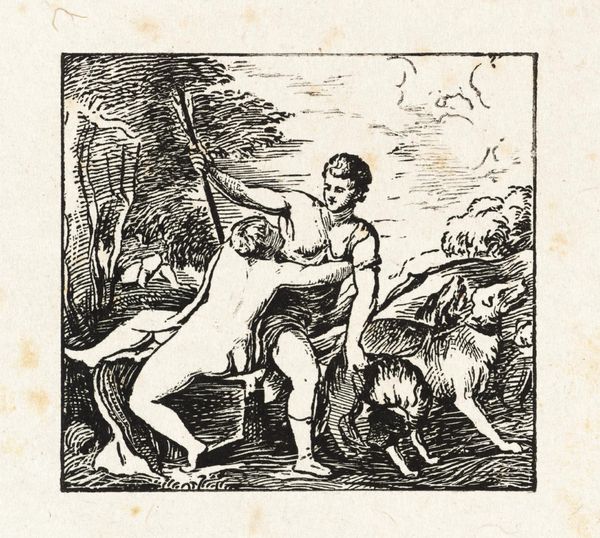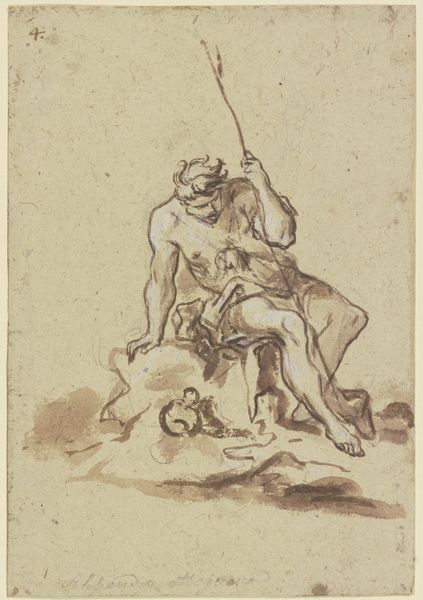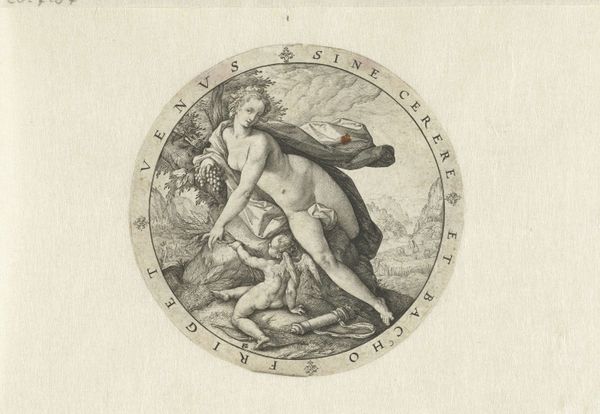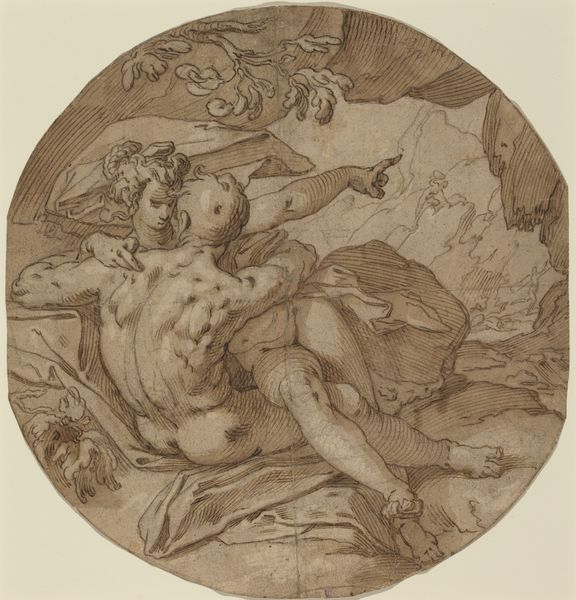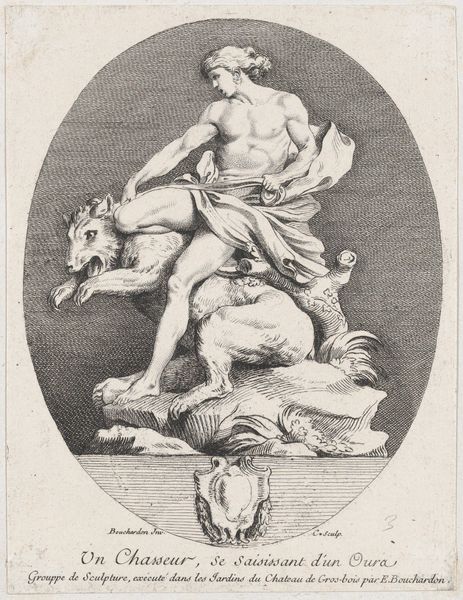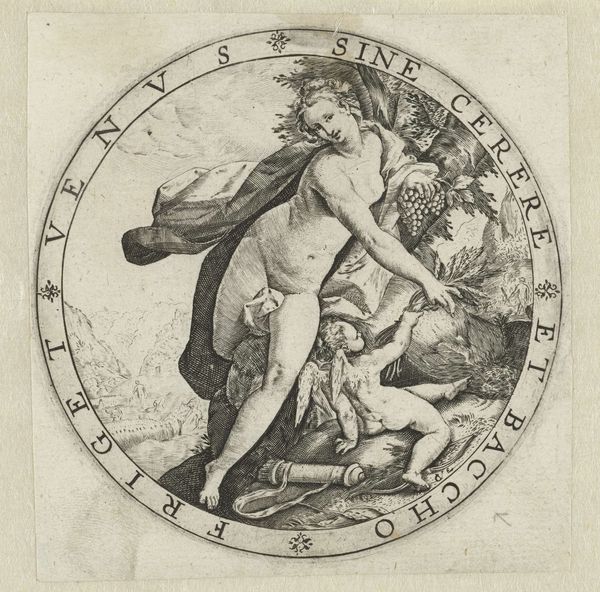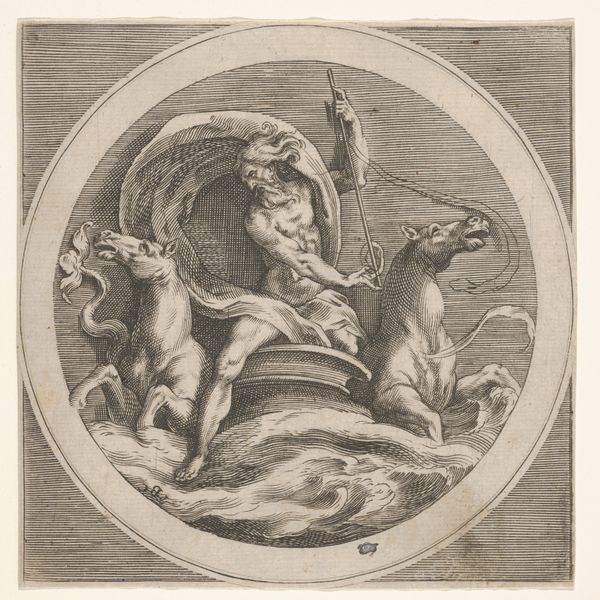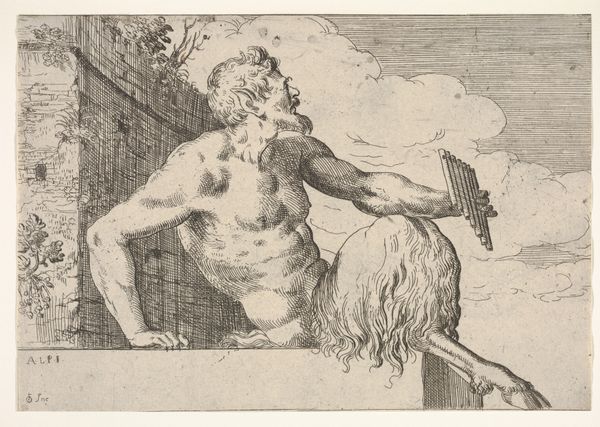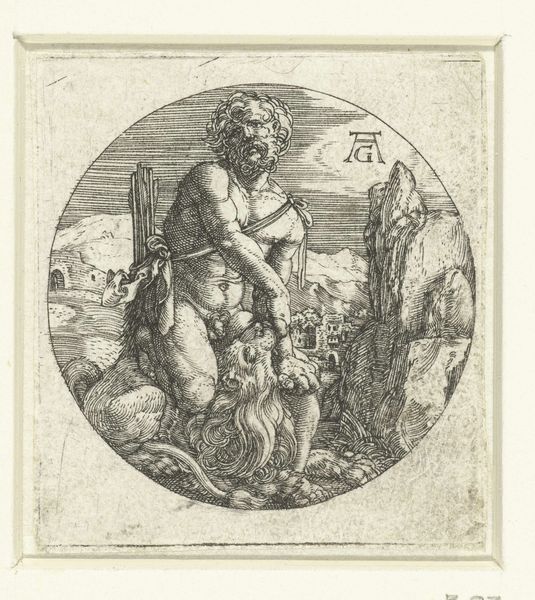
drawing, ink
#
drawing
#
allegory
#
baroque
#
greek-and-roman-art
#
classical-realism
#
figuration
#
ink
#
history-painting
Copyright: Rijks Museum: Open Domain
Jan van Huysum made this ink drawing, Variant for Medallion: Hercules with Cerberus, in the 18th century. During this period, mythological figures such as Hercules were often used to symbolize power, virtue, and moral strength, reinforcing societal values. This drawing captures Hercules' triumph over Cerberus, the multi-headed dog guarding the gates of the Underworld. Consider what this imagery communicated to its intended audience: ideas about dominance and control over the "inferior," and perhaps a celebration of masculinity. What does this imagery tell us about the accepted values of the time? The depiction of Hercules, a strong, virile male, also reflects the period's emphasis on classical ideals and the male form as the epitome of beauty and strength. But let’s not forget that classical antiquity can also be a site for thinking through same-sex desire. Van Huysum’s drawing not only showcases his artistic skill but also serves as a reflection of the cultural and social values of his time, inviting us to consider how these values continue to resonate—or clash—with contemporary perspectives on power, gender, and identity.
Comments
No comments
Be the first to comment and join the conversation on the ultimate creative platform.
